A journey into the heart of the Moroccan desert is a bucket-list experience for many—myself included. So, when I set off on my 10-day Moroccan adventure, a Marrakech to Fes Sahara Desert Tour was at the very top of my itinerary.
If you’re planning a similar trip, this personal review of our 3-day journey covers everything you need to know. From the full itinerary and scenic stops along the way to costs, travel tips, and what to expect throughout the experience.
Planning to take the reverse route from Fes to Marrakech? My friend has done that journey. Check out her Sahara Desert Tour from Fes to Marrakech here.
Table of Contents
Where to Book your Sahara Desert Tour in Morocco
While it’s possible to DIY this trip, I had limited time in Morocco. I figured the most practical (and stress-free) option was to join an organized tour. After plenty of research, I decided to go with Morocco Fabulous Travel for their highly rated Marrakech to Fes Desert Tour.
Now, I’ll be honest. I usually steer clear of organized tours. I prefer exploring places independently and doing things at my own pace. But hands down, booking this tour turned out to be one of the best decisions of my trip. The experience was memorable in every way.
Another pleasant surprise? Our group was small, just five travelers, which made our experience feel less like a tour and more like an excursion with friends. We instantly clicked as a group, and our driver-guide was able to tailor parts of the journey to suit our shared interests.
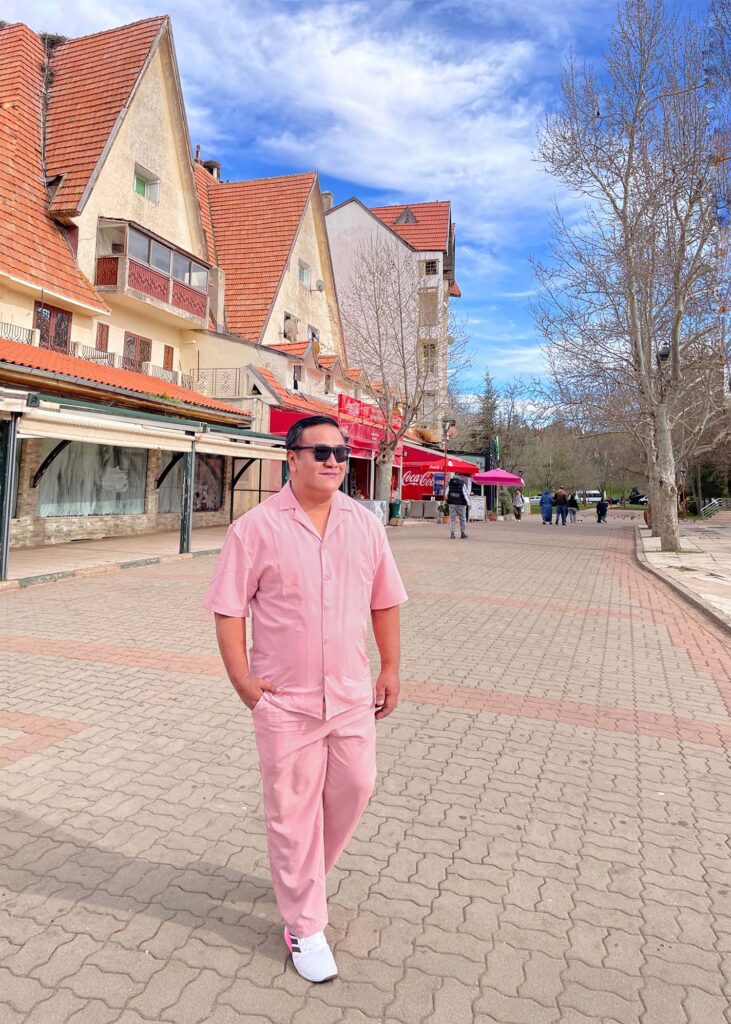
How much does a Sahara Desert Tour Cost?
Rates can vary depending on several factors such as group size, accommodation type, and the time of year. For larger groups of 17 or more, the rate is 150 euros per person. However, for smaller groups, for example, just two people, the cost increases to around 249 euros per person.
There were five of us in the group, and each person paid 249 euros (approximately ₱16,500).
Here are the inclusions of the trip:
- Private air-conditioned vehicle
- Pick-up from Marrakech hotel and drop-off at Fes hotel
- English speaking driver
- 2-night accommodation (Dades Valley and Luxury Desert Camp)
- Camel trek experience and/or dune bashing to camp
- Meals: 2 dinners and 2 breakfasts
Exclusions: Lunches, Beverages, Entrance Fees & Tips
Marrakech to Fes: Things to Know Before You Go
Before you embark on your desert tour, here are a few pointers to ensure an enjoyable experience:
- Pack smart – Bring light, breathable clothing for the day and something warm for the chilly desert nights. Desert temps can swing dramatically. When we stayed overnight in Erg Chebbi, it dropped to 13°C after sunset, so it’s always good to come prepared.
- Protect yourself from the sun – Sunscreen, sunglasses, and a hat are essentials under the desert sun.
- Bring a scarf – If you’re doing the camel ride in Erg Chebbi, know that you’ll be on the camel for about 1.5 hours so trust me, a scarf or a turban is a MUST for sun and sand protection!
- Stay hydrated – Always carry water with you, especially during long drives or dune walks.
- Stock up on snacks and your favorite drinks – The road can be long, and food stops may be few and far between, so having your go-to snacks on hand is always a smart move. Also, keep in mind that Morocco is a predominantly Muslim country, and alcohol isn’t always available in restaurants or hotels. Do yourself a favor and hit up a Carrefour before the trip to grab your drink of choice—you’ll thank yourself later!
- Bring cash – Some stops along the way may not accept cards, so it’s good to have some Moroccan dirhams on hand. While ATMs are easy to find in cities, they’re much harder to come by once you’re in small villages or out in the desert.
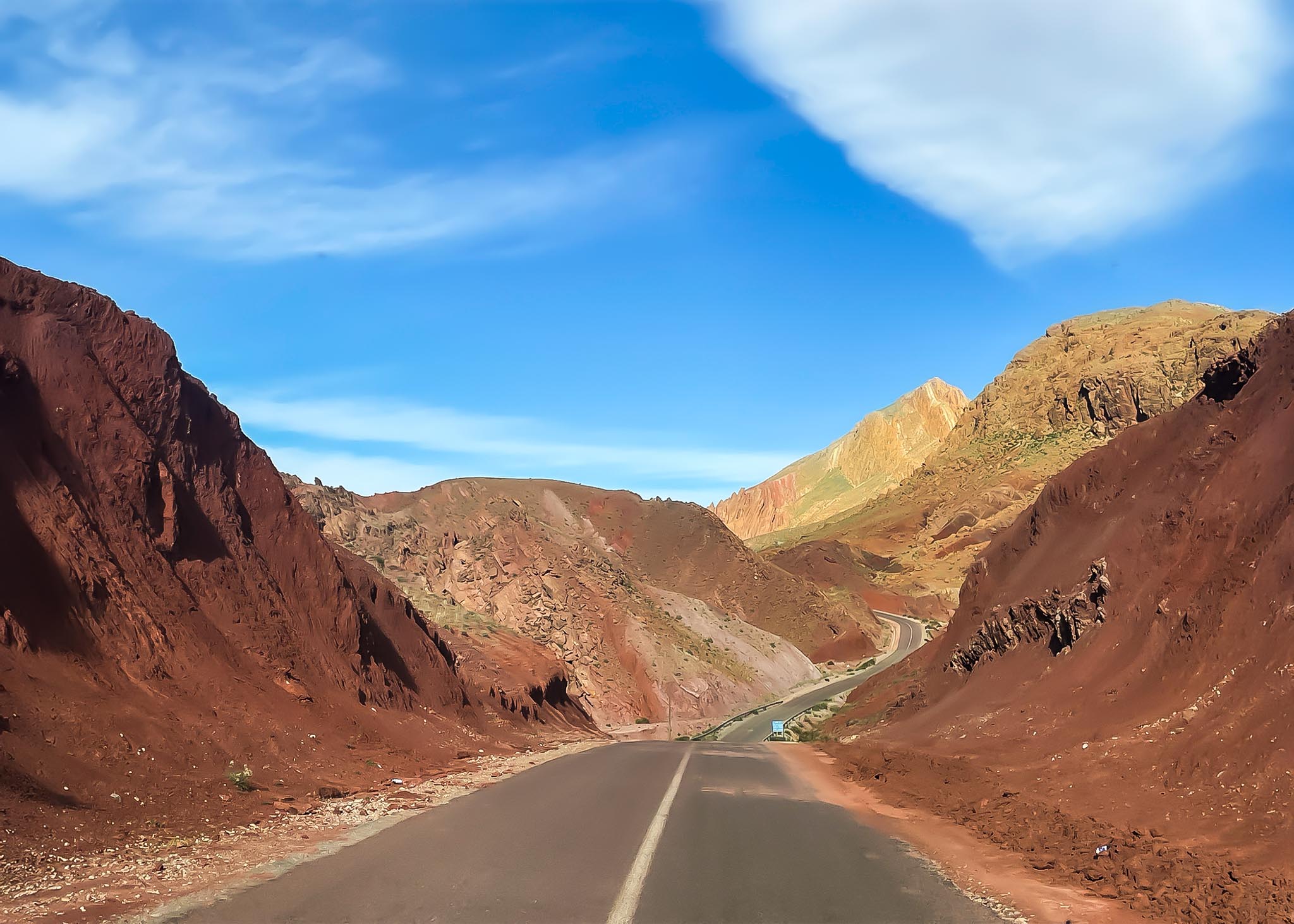
Our 3-Day Sahara Desert Itinerary from Marrakech to Fes
Day 1: From Marrakech to Dades Valley
The starting point of our journey was Jemaa el-Fnaa. It’s the sprawling square often described as the beating heart of Marrakech’s medina. I remember watching an episode of The Amazing Race as a teenager and being fascinated by the place. With its snake charmers, fortunetellers, street food stalls, and constant buzz of activity, it’s the kind of place that stays with you long after you leave.
I had already spent two full days soaking up the chaos and color of Marrakech before the start of the desert tour. Just enough time to get a taste of the city’s energy and be ready for the calmer pace of the road ahead.
Our meet up spot was in front of Le Grand Balcon du Café Glacier. That’s where we met Hassan, our driver-guide for the next three days. After brief introductions, we hopped into a modern, mid-sized van. Then, we set off on a stunning drive through the High Atlas Mountains. Leaving the buzz of the medina behind, I watched as the landscapes gradually shifted — from the bustling city streets to serpentine mountain roads, then to vast, open valleys.

Tizi Tichka
We whizzed past some Berber villages and went through hairpin bends before making a brief stop at Tizi Tichka, the highest mountain pass in Morocco. From this vantage point, we were rewarded with Instagram-worthy shots of the N9 road snaking through the rugged terrain and the expansive valley below.
Ait Ben Haddou
After a filling lunch, we headed to the fortified village of Ait Ben Haddou in the Ounila Valley. This UNESCO World Heritage Site was a historic landmark along the former caravan route between the Sahara and Marrakesh. Its traditional buildings stand as a great example of Moroccan earthen clay architecture.
And yes, it’s the real-life City of Yunkai in Game of Thrones. We spent nearly two hours wandering around the earthen structures and checking out some of the shops selling bric-a-bracs. I ended up buying a red scarf for 20 MAD and a small painting for 100 MAD from one of the artisanal shops.
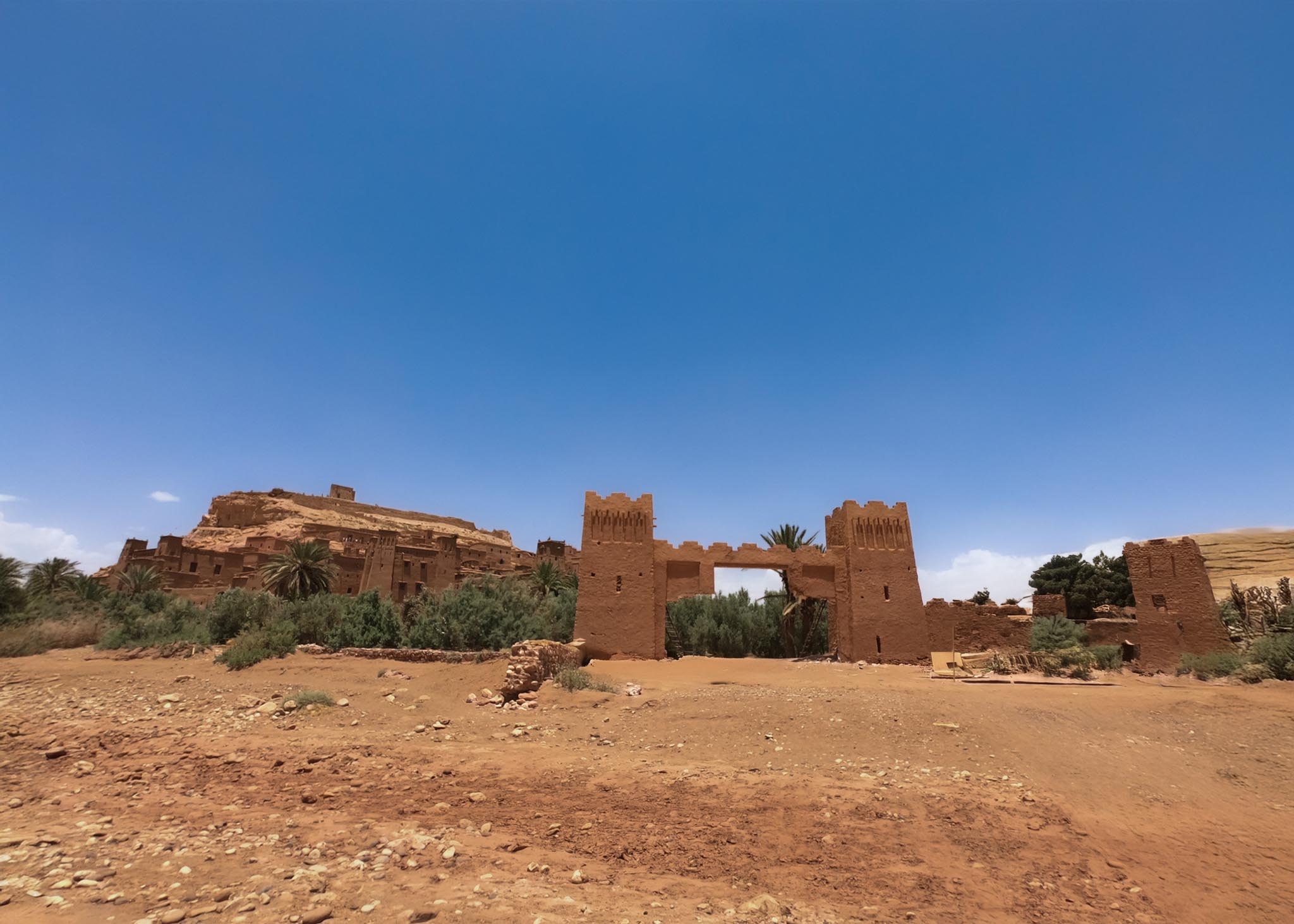
Ouarzazate, the “Gateway to the Sahara Desert”
We continued on to Ouarzazate, a caramel-colored town often referred to as the “Gateway to the Sahara.” By this point, the change in scenery was unmistakable. The air felt drier, the terrain more arid, and the colors warmer. You could truly feel the desert setting in.
One of the highlights here was a visit to Atlas Film Studios, the largest film studio in Africa. Walking through its opulent sets and oversized props felt like stepping into a scene from another time. Iconic films like Gladiator, The Mummy, The Ten Commandments, and Cleopatra were all shot here — and it’s easy to see why. The dramatic desert backdrop makes it a filmmaker’s dream.
Valley of Roses
We continued with a scenic drive through the Valley of Roses in the M’Goun Valley. This area ranks among the world’s largest producers of rose oil. Every April and May, local farmers harvest about 4,000 tonnes of wild roses and send them to nearby Kalaat M’Gouna. There, artisans transform the petals into products like tea, perfume, shampoo, soap, and nasal decongestants.
But if you’re imagining endless fields of blooming roses, you might be a little disappointed. Our guide Hassan explained that harvesters pick the flowers so quickly during the season that the valleys rarely get the chance to burst into color. There’s a pop of red here and there, but blink, and you might miss them.
Monkey Fingers
Our final stop for the day was the majestic Monkey Fingers Canyon, tucked along the road to Tamlalt in the Dades Valley. This area is famous for its surreal rock formations that resemble a monkey’s hand reaching out from the earth. Despite the name, there are no actual monkeys here, just jaw-dropping geology and a landscape that looks almost from another planet.
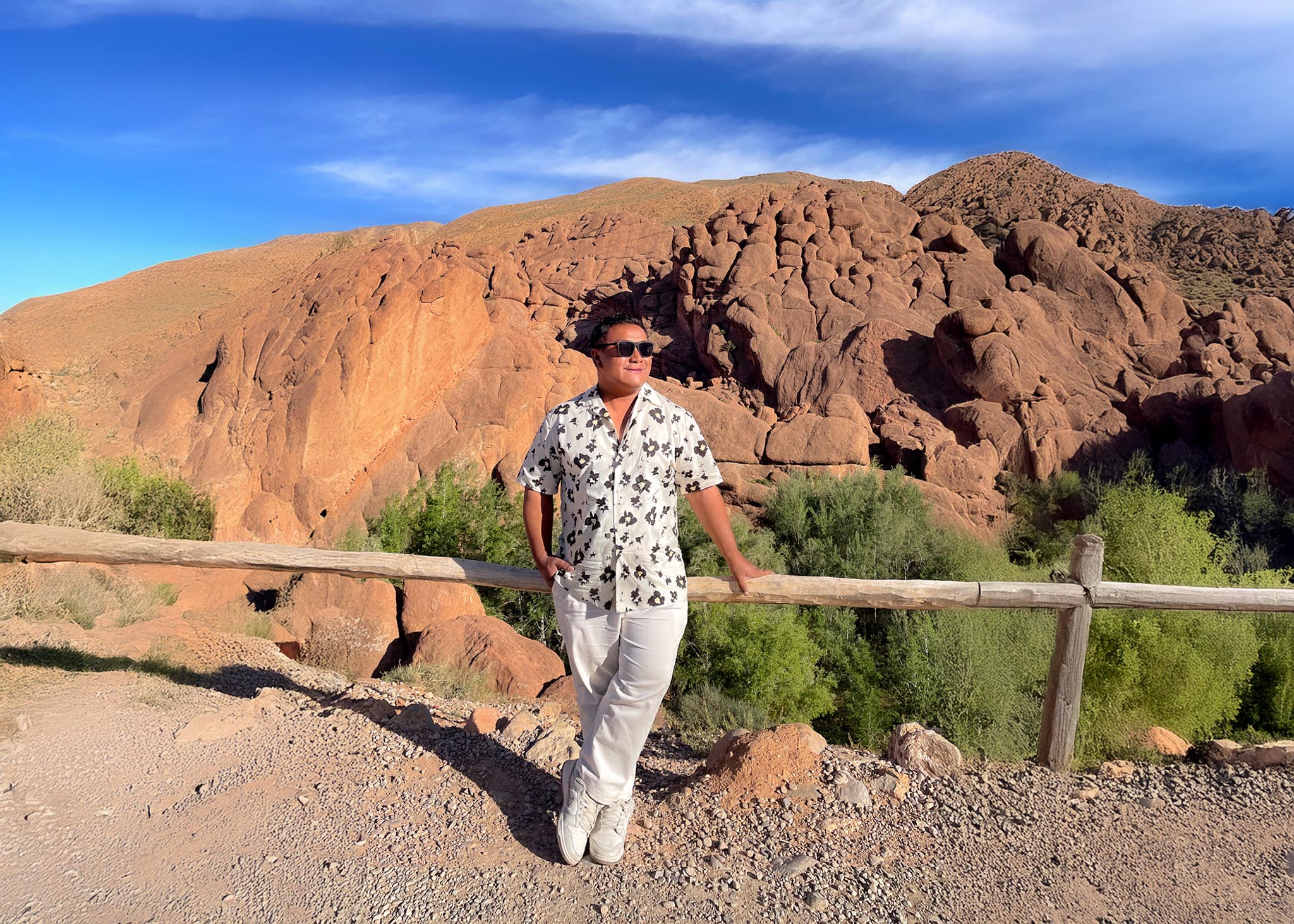
Riad Tumast (aka Riad Soleil Bleu)
We covered more than 350 kilometers of road on our first day and felt exhausted, but the exquisite views more than made up for it. Each stop along the way felt like peeling back another layer of Morocco’s diverse beauty. We spent the night at Riad Tumast, a cozy and stylish boutique hotel that made us feel right at home.
After a warm day basking in the desert’s 26°C heat, the temperature dipped to a brisk 13°C by nightfall. We fell asleep to the haunting sound of desert winds howling through the dunes—a fitting lullaby for our Saharan escape.
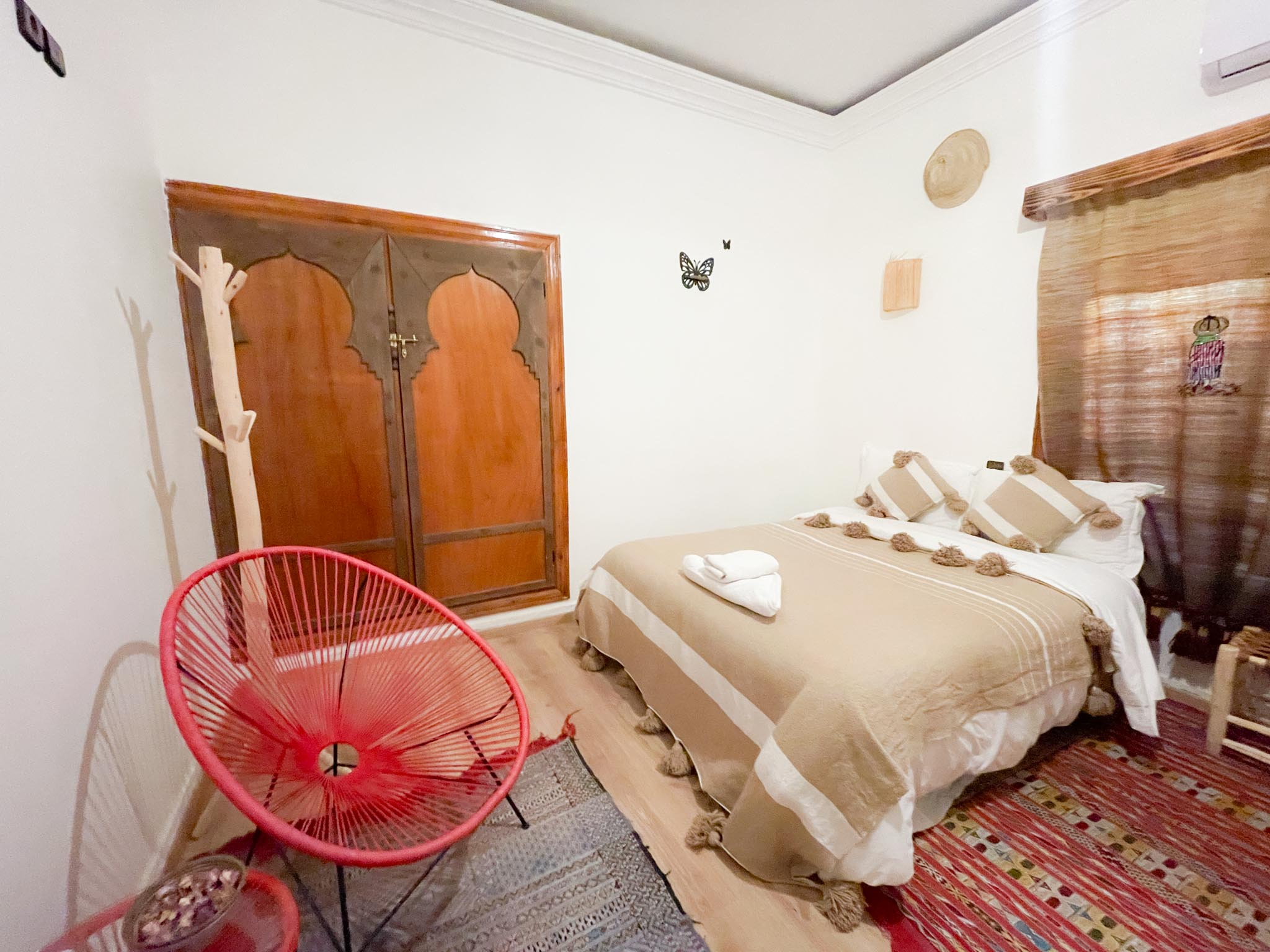
Day 2: From Dades Valley to Merzouga
After a hearty breakfast at the hotel, we hit the road again at 9am, making quick photo stops at the lush Tinghir oasis and the breathtaking Todra Gorge.
Tinghir Oasis and Todra Gorge
Palm trees and fruit groves encircle the small town of Tinghir, which many regard as one of southern Morocco’s most beautiful oases. Just a short drive away lies Todra Gorge, a dramatic rocky gorge carved into the High Atlas Mountains, rising to an altitude of 1,400 meters. With its limestone cliffs and cool, shaded paths, the canyon is a dream for outdoor enthusiasts. We couldn’t help but gawk at a few rock climbers scaling the canyon walls with stomach-churning drops right below them!
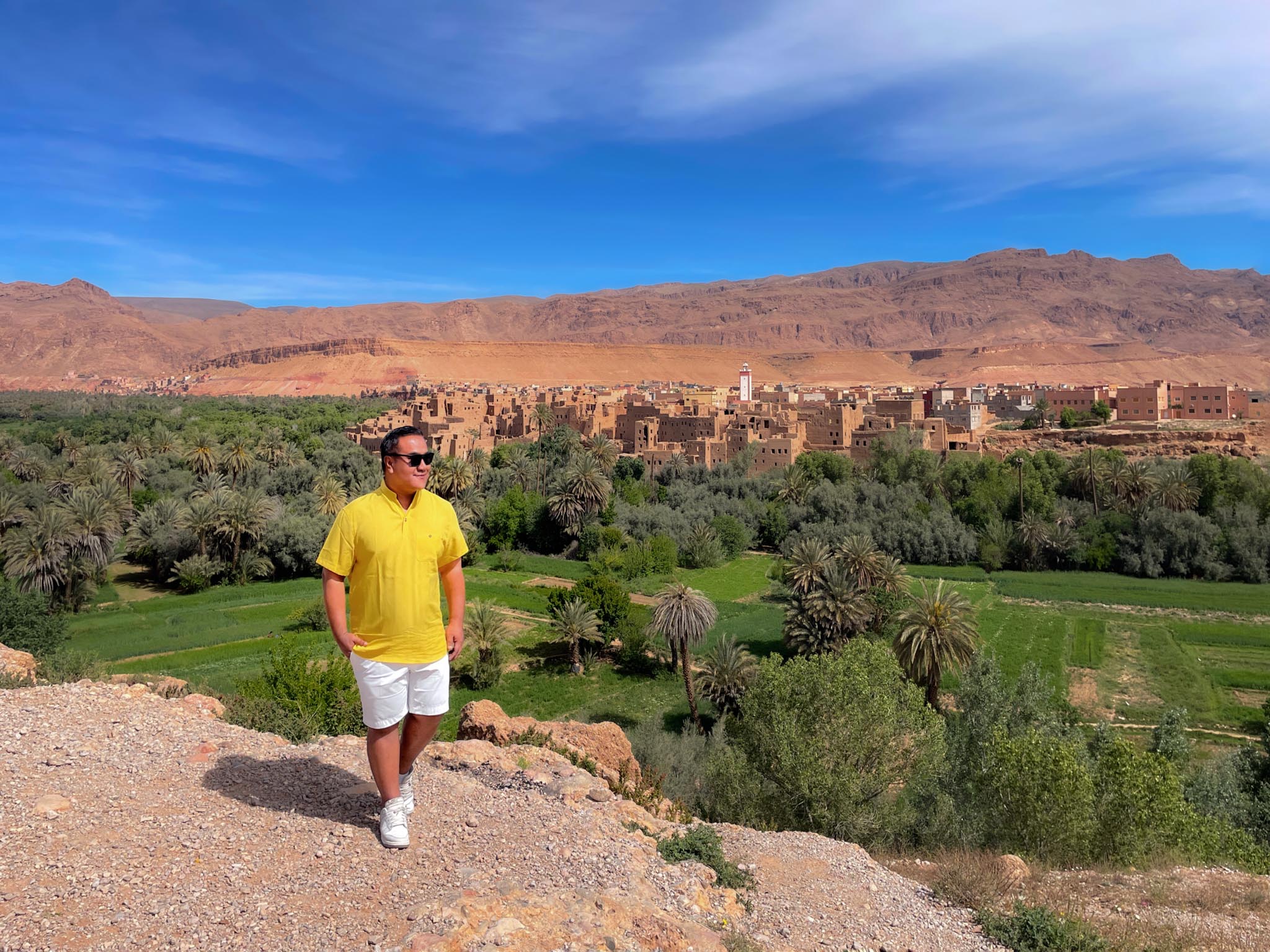
Next, we had a short detour at a Berber shop selling traditional outfits. We couldn’t resist playing dress-up in Berber wear, snapping plenty of photos like total tourists. It was all in good fun. Afterward, we cooled off with glasses of mint tea, a refreshing Moroccan staple that we couldn’t get enough of.
Following a brief stop for lunch, we continued our journey into Merzouga with Hassan setting the vibe by playing some chill Berber songs on Spotify. Merzouga is a quiet, dusty village in southeastern Morocco near the Algerian border. It is best known as the entry point for exploring the rose-gold dunes of Erg Chebbi.
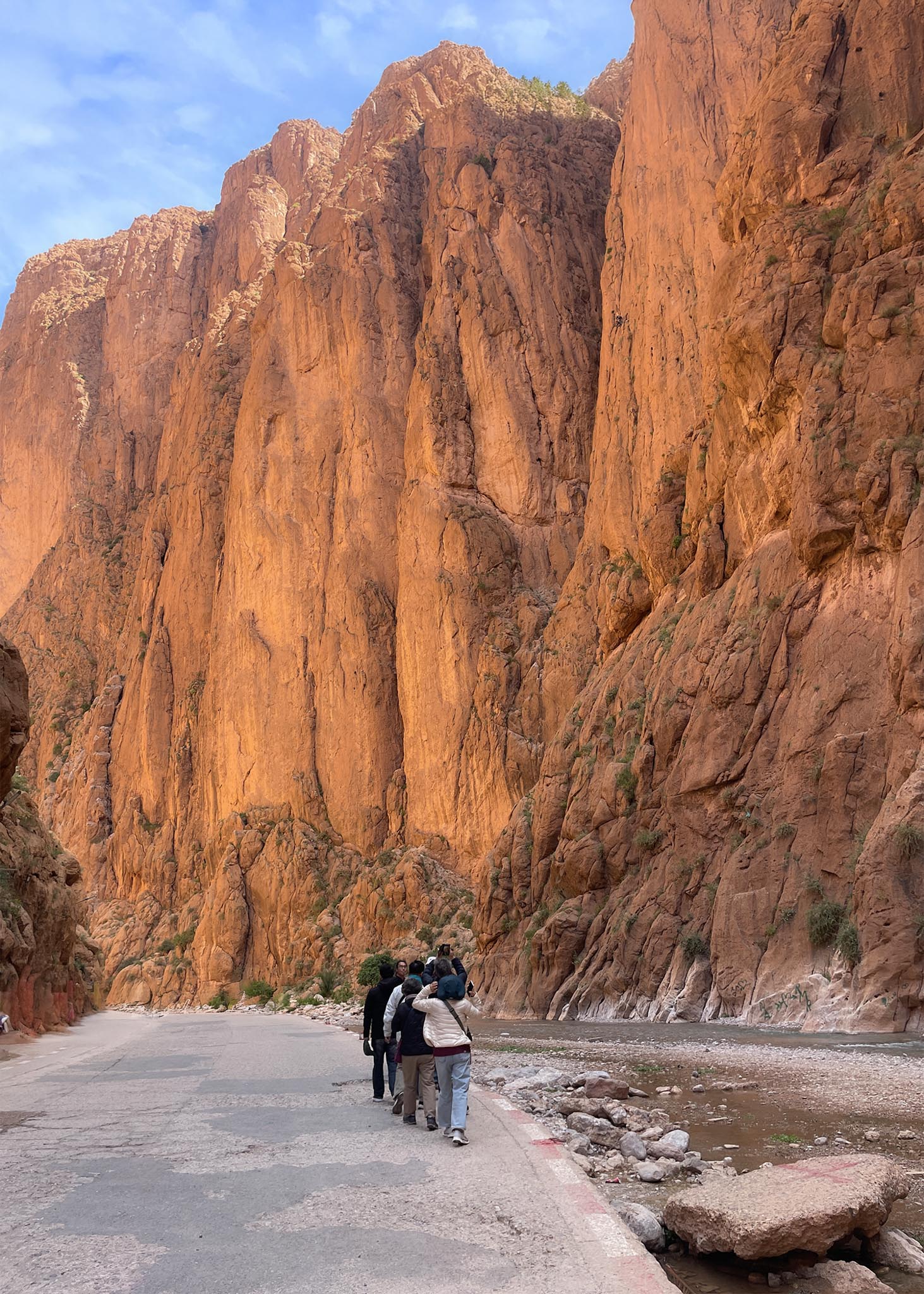
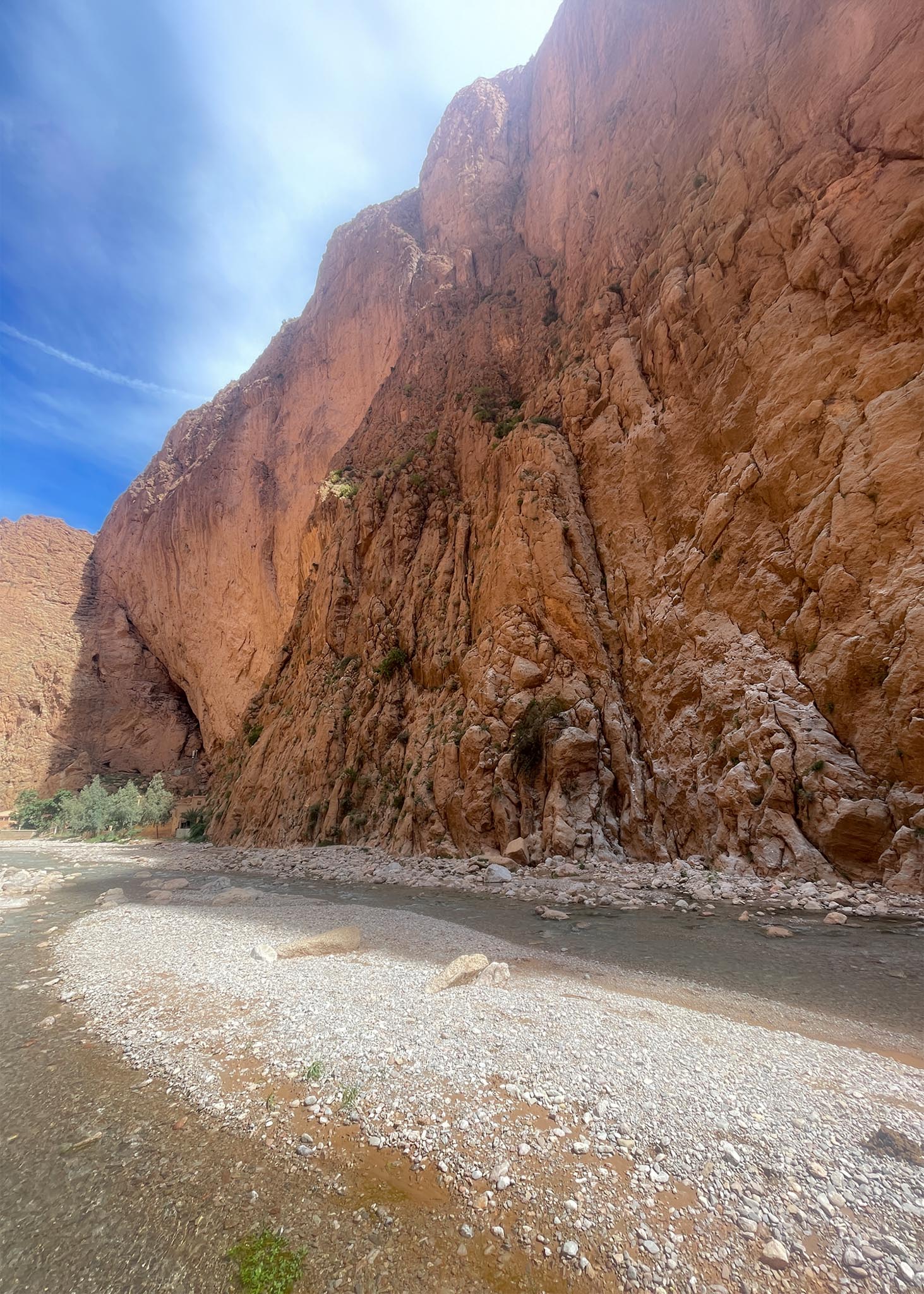
Erg Chebbi, One of Morocco’s Largest Seas of Dunes
Erg Chebbi is a scenic stretch of the Moroccan Sahara, where towering dunes soar above the barren hamada (a hard-packed, rocky desert). The dune field stretches approximately 28 kilometers long and 5 to 7 kilometers wide. As we got closer, the scenery turned almost otherworldly with the rocky terrain suddenly morphing into rolling waves of sand that shimmered in the afternoon sun.
Upon reaching Merzouga, we were given two options to reach our desert camp: a 1.5-hour camel ride through the dunes or a quick 10-minute transfer by 4×4. Since I’d already had my fair share of camel rides in Egypt and Jordan, I decided to give the camels a break this time and opted for the 4×4.
What I thought would be a simple transfer turned out to be anything but. Within minutes, we were tearing across the golden sands of Erg Chebbi in what can only be described as an adrenaline-fueled dune-bashing joyride. Think Fast and the Furious, desert edition — complete with sharp turns, rollercoaster-like drops, and a cloud of sand in our wake. Our driver (ironically also named Hassan!) navigated it all with cool, effortless control. I screamed, I laughed, and probably inhaled half the Sahara, but it was wildly fun and totally worth it.
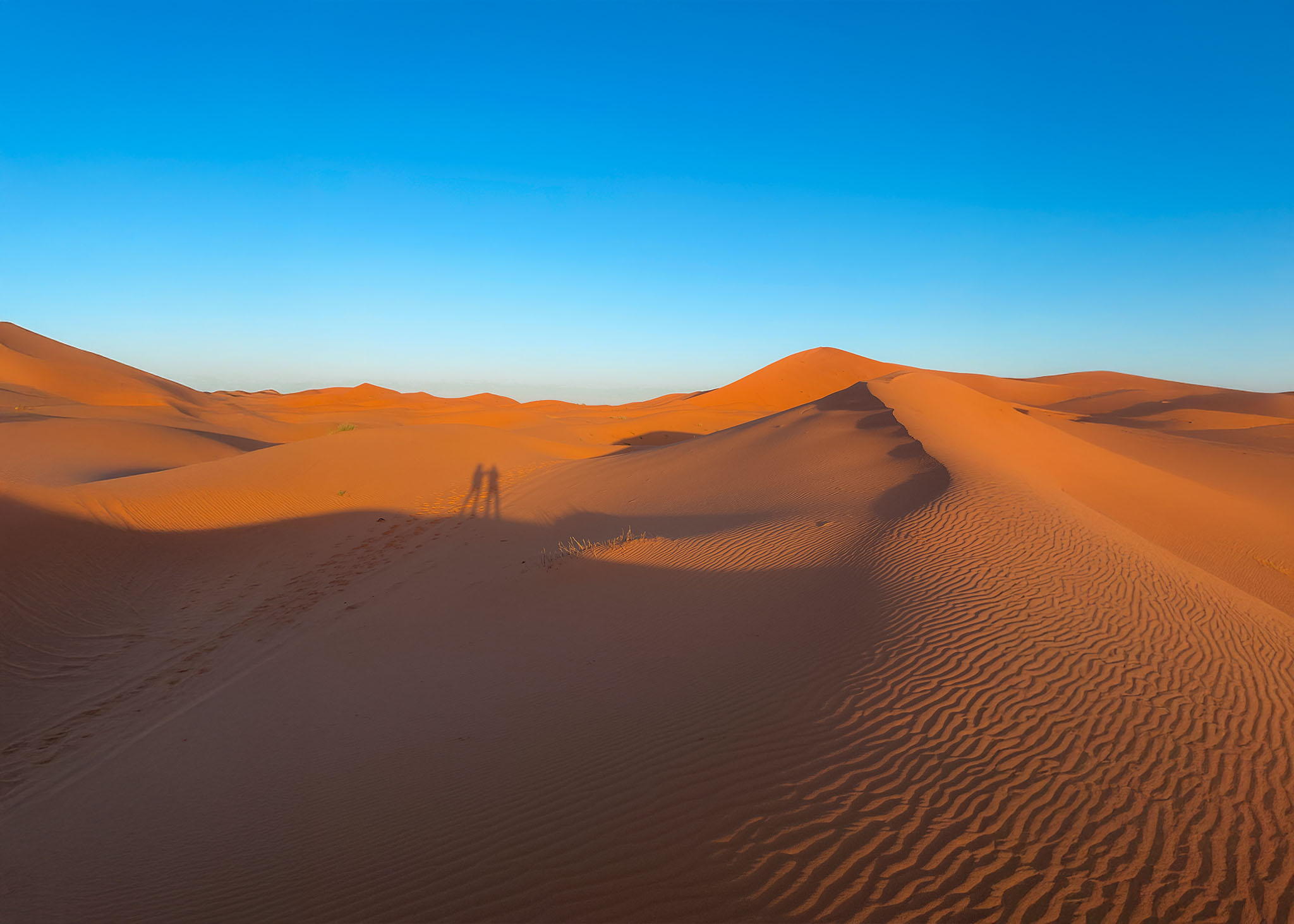
Relaxing Desert Camp
We reached our camp–aptly named Relaxing Desert Camp — with plenty of time to soak in the dramatic sunset over the shape-shifting dunes. It was a truly breathtaking moment to bask in the golden glow of the setting sun surrounded by the vast silence of the desert. Places like this invigorate me and remind me exactly why I travel.
After a sumptuous dinner, the Berber staff treated us to a lively drumming session, filling the night with the rhythm and spirit of Berber songs. It was another exhausting but rewarding day. Let’s not forget that the tents we had were quite luxurious, adding a touch of comfort to our desert adventure. Each unit had a private bathroom with a walk-in shower and an outdoor balcony where you could admire the star-filled sky.
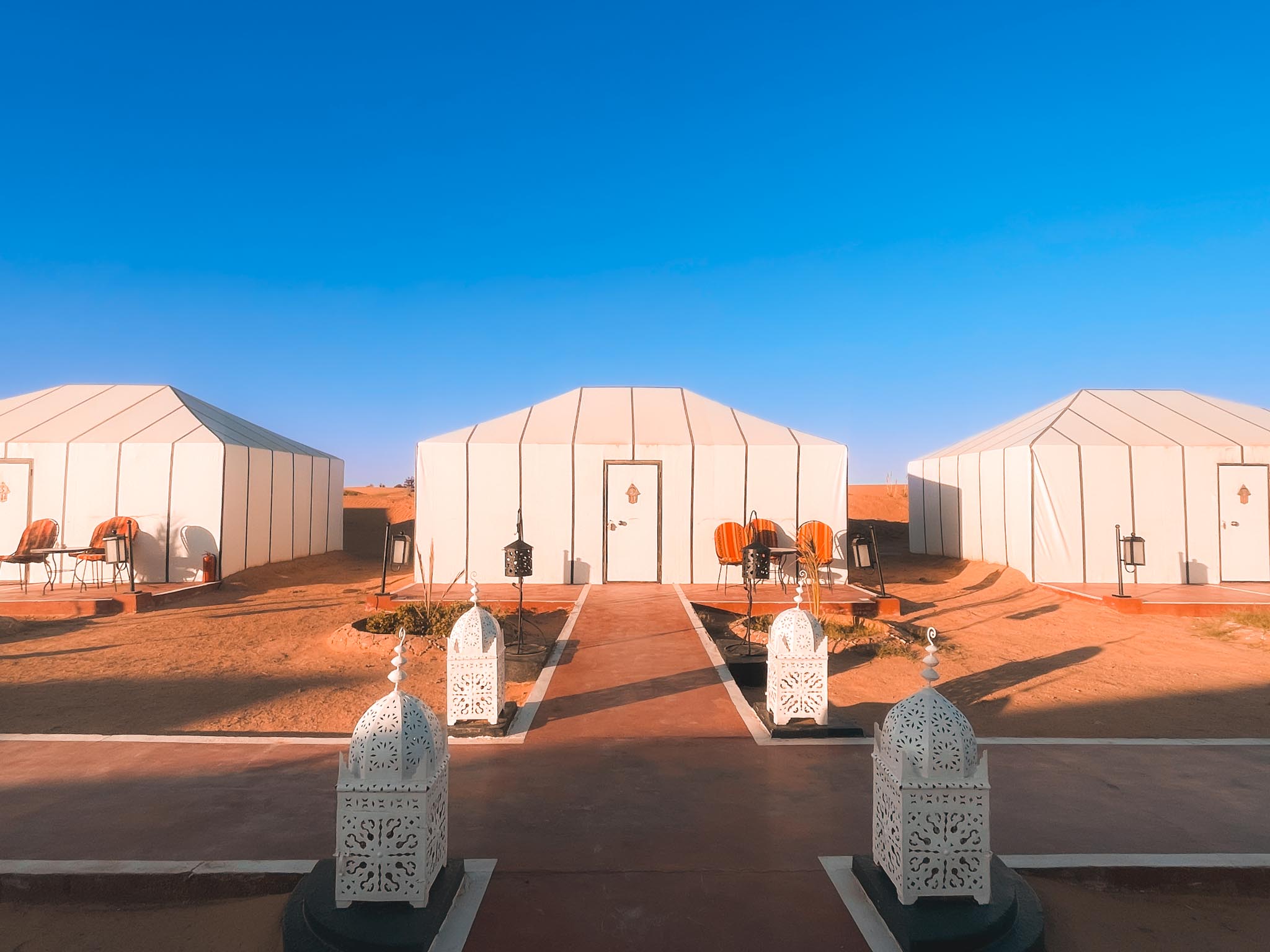
Day 3: From Merzouga to Fes
We rose early on our third and final day, just in time to catch the sunrise and walk in the stillness of the dunes. Erg Chebbi is huge. You can walk for a while without seeing anyone else. Just you, the sand, and maybe a random camel or two wandering by.
Aoufous and Ziz Valley
We left our camp shortly after breakfast and hit the road towards Fez. It was a long travel day.We spent most of it in the van, covering nearly 500 kilometers from Merzouga to Fes. Our drive included a quick stop at Aoufous, where we stretched our legs and took in the sweeping views of the Ziz Valley from a lookout point.
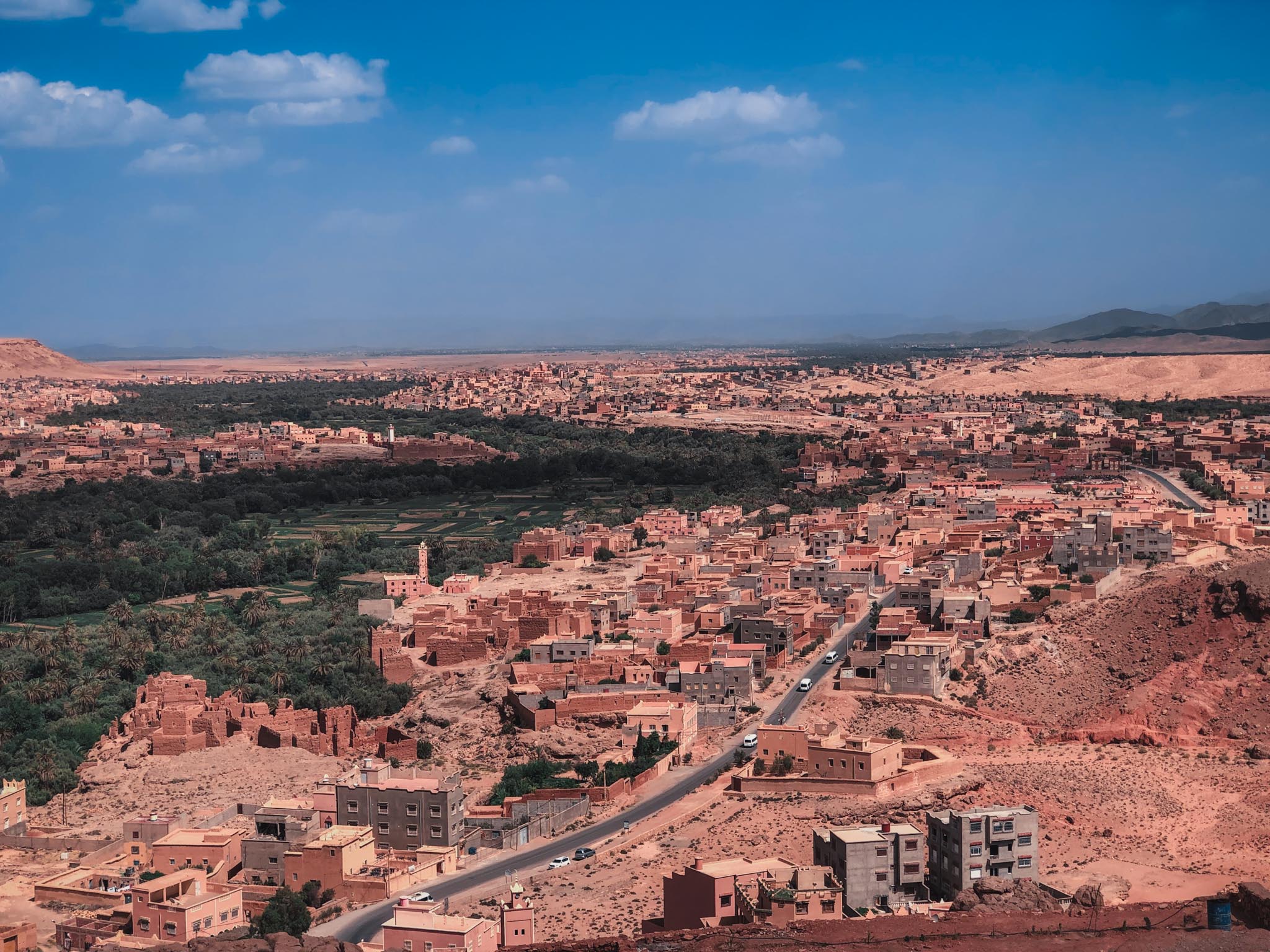
Cèdre Gouraud Forest
From there, we continued our journey through the Middle Atlas, stopping at Cèdre Gouraud Forest. This woodland park is a popular stopover for its centuries-old cedar trees and a small population of Barbary macaques that live there. It’s a nice place to take a break with picnic tables, toilets, and a few short walking trails. Some people were selling peanuts to feed the monkeys but we passed. As travelers who try to be mindful and sustainable, we’ve seen the effects of tourist feeding activities in places like Thailand and Cambodia—monkeys can become overly dependent on handouts, and it really changes their behavior.
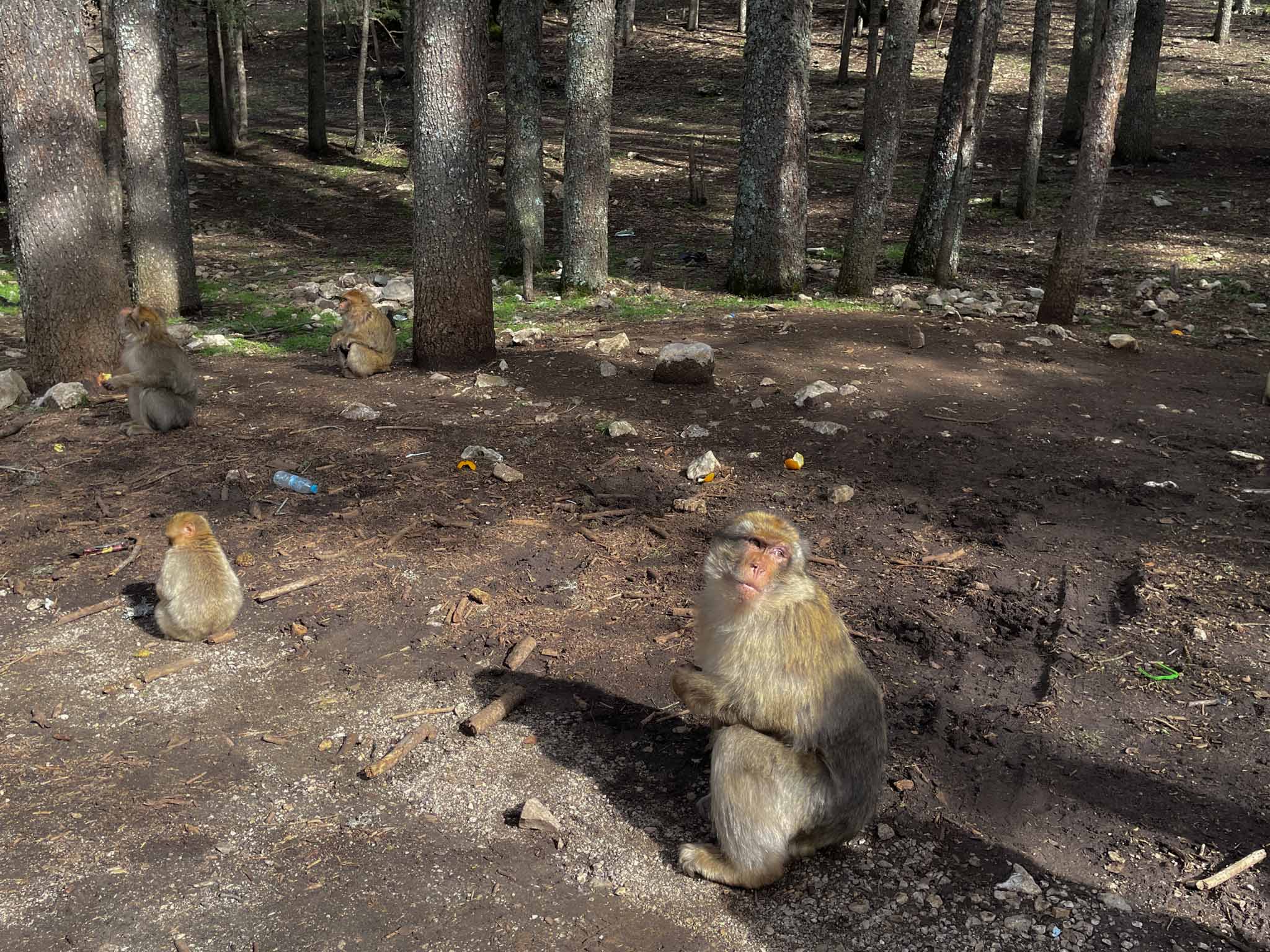
Ifrane, Morocco’s Little Switzerland
The highlight of the day was the side excursion to Ifrane, touted as Morocco’s Little Switzerland. It truly felt like we’d been suddenly transported to a Swiss village. Built by the French in 1929, this former hill station in the Middle Atlas is known for its alpine-style architecture, pine forests, and nearby ski slopes. We took a leisurely stroll through town, admiring the buildings and atmosphere then treated ourselves to coffee and gelato at one of the local cafes.
We also stopped to have a selfie with the Lion Statue, a rock sculpture sitting on a patch of grass near the Hôtel Chamonix. It is a tribute to the majestic Atlas lions that once roamed Morocco’s mountains, including the region around Ifrane. Sadly, these lions were hunted to extinction, and the statue serves as a powerful reminder of what was lost. The last known Atlas lion is believed to have been shot in the early 1920s.
Fes, Finally!
It was a little past 7pm when we arrived in Fes. We said our goodbyes, grateful for the new friendships we’d made, and for the safe and steady journey with Hassan behind the wheel. I couldn’t recommend this tour highly enough for your next Moroccan adventure. Special thanks to Mohamed of Morocco Fabulous Travel for arranging this tour for us. 🙂
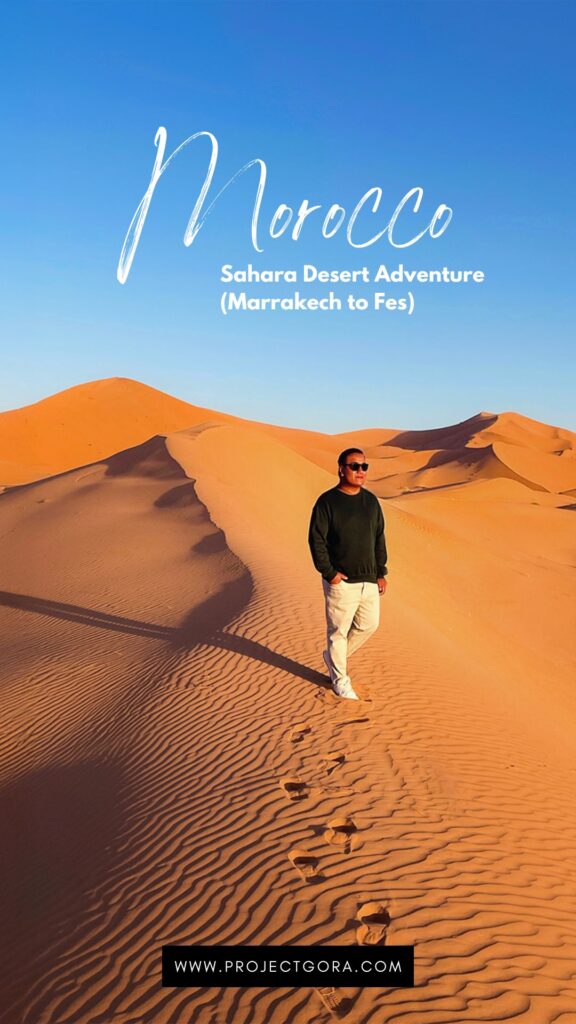
Interested to do this trip?
Check out Morocco Fabulous Travel to avail this Marrakech to Fes tour. If you’re traveling solo, they offer shared group tours. For private tours, you can also check out their Morocco Tours packages for more customized options. You can read other travelers review of their service at TripAdvisor.
Facebook: @moroccofabuloustravel
Instagram: @moroccofabuloustravel
Staying connected in Morocco
Mobile phone coverage in Morocco is generally reliable in cities. However, it tends to be spotty in remote areas like the desert and mountains. During our Marrakech to Fes Sahara Desert adventure, we lost signal while staying overnight at the desert camp. Some parts of the Atlas Mountains also had weaker reception. That said, Holafly Morocco eSIM provided a stable connection throughout most of the trip.
Pin this for future reference!
And that’s a wrap, dear readers! I hope you found this post on my Marrakech to Fes desert tour helpful and inspiring. Is Morocco on your travel bucket list? Or have you already explored this magical destination? I’d love to hear your thoughts and stories. Let’s chat in the comments below!

